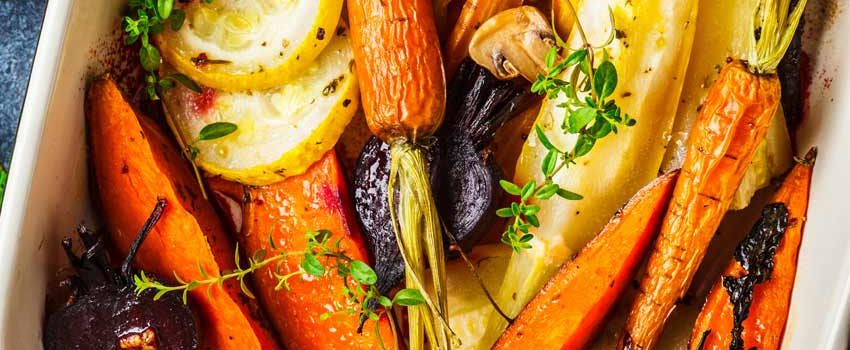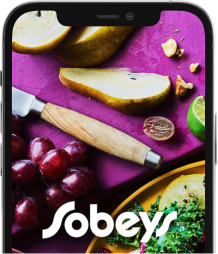Learn everything you need to know, from prep tips to recipe ideas, about using some common types of root vegetables.
Root vegetables are versatile staples in any kitchen. They add hearty substance to a meal, last a long time in storage, and hold up to a variety of cooking methods. Learn how to select, prep, and use some of your favourite root veggies.
Carrots
Crisp and mild when raw, yet sweet verging on fruity when cooked, carrots are a member of the parsley family.
How to select and prep carrots
Select brightly coloured, smooth, and firm carrots for best taste.
Keep carrots in a plastic bag to avoid dehydration. They’ll last for several weeks refrigerated.
Scrub well or peel to eliminate the skin’s slightly bitter taste.
How to cook carrots
Carrots can be roasted, boiled, braised, steamed, simmered in a slow cooker, or stir-fried. Use in soups and stews; mash for side dishes.
Carrot Recipes
Potato-Carrot Mash: Boil chopped potatoes and carrots until tender, then mash until fluffy.
Carrot & Caraway Slaw: Toss together shredded raw carrot, toasted caraway seeds, olive oil, cider vinegar, and honey.
Celery root (a.k.a celeriac)
Celery root is similar to its relative the turnip but has a more celery-like, peppery, even nutty flavour.
How to select and prep celery root
Choose small, firm roots to avoid large fibrous cores.
Keep celery root whole in the fridge for up to a week.
Scrub and trim; peel with a vegetable peeler.
How to cook celery root
Celery root can be puréed, sautéed, braised, or roasted. Slice thinly for salad; use scraps for soup stock; mash with potatoes.
Celery root ideas and recipes
Zesty Root Vegetable Salad: Thinly slice celery root and other root veggies, then dress with capers, wine vinegar, and olive oil.
Squash and celery root soup: Add diced celery root, squash, and vegetable broth to sautéed onions; simmer until tender, then purée.
Harvest Vegetable & Hazelnut Crumble: Surprising and so delicious! Our inspired savoury spin on a sweet classic combines a whole celery root with roasted sweet potatoes, carrots, and cauliflower. Oats, hazelnuts, and honey make up the crumble topping.
Parsnips
These carrot cousins have a sweet and nutty flavour and a pale off-white colour.
How to select and prep parsnips
Look for firm, blemish-free small roots.
Keep in a plastic bag in the fridge for up to three weeks.
Scrub and trim; peel only if desired.
How to cook parsnips
Parsnips can be roasted, boiled, or mashed. Cut for oven fries; grate and substitute for carrots in cake.
Parsnip recipes
Roasted parsnips and pears: Roast chopped parsnips and pear wedges with chicken or Cornish hens.
Parsnip, Chive & Buttermilk Purée: Boil parsnips with potatoes; drain, then add cream cheese, buttermilk, and chopped chives, blending until smooth.
Rutabagas
Rutabagas are related to turnips, with a similarly mild taste and texture but a more yellow flesh.
How to select and prep rutabagas
Choose smooth rutabagas that feel firm and heavy for their size.
Keep in a plastic bag in the fridge for up to three weeks.
Wash and peel.
How to cook rutabagas
Rutabagas can be boiled, steamed, roasted, or mashed. Add chopped to stews and stir-fries; substitute for turnip in recipes.
Rutabaga ideas and recipes
Rutabaga carrot ginger soup: Sauté chopped rutabaga, carrot, ginger, and onions; add broth and simmer, then blend.
Roasted maple rutabaga: Chop rutabaga into small cubes, toss with maple syrup and season, then roast on a rimmed baking sheet.
Root Vegetable Mash with Crispy Topping: Rutabaga takes the stage with other root veggies to create a creamy mash using some veggie peels that, with the help of olive oil and baking, turn into a delicious crispy topping!

